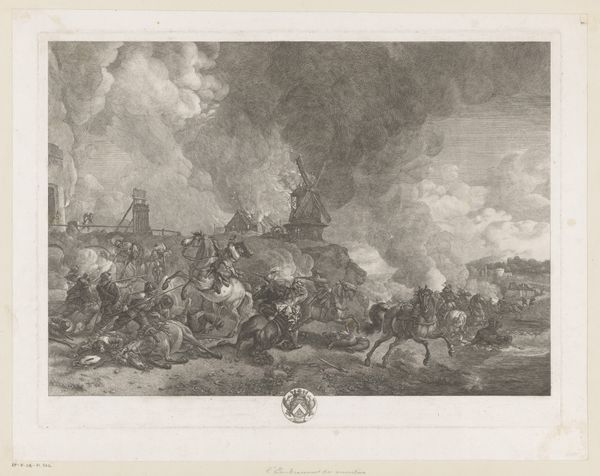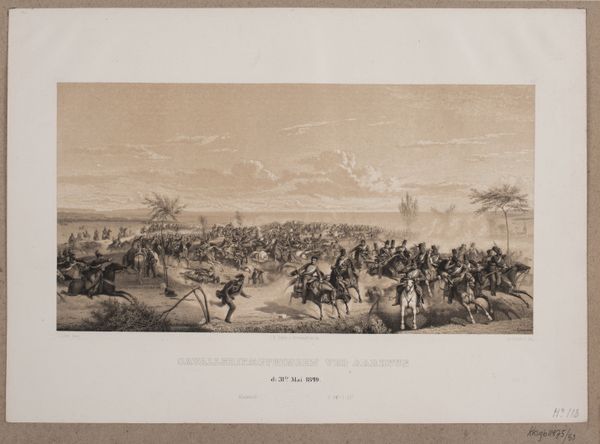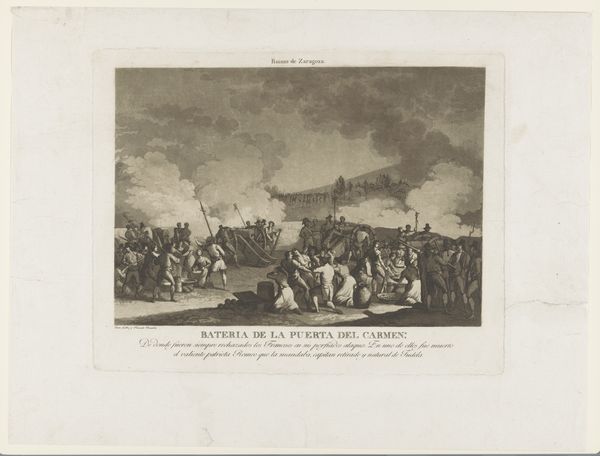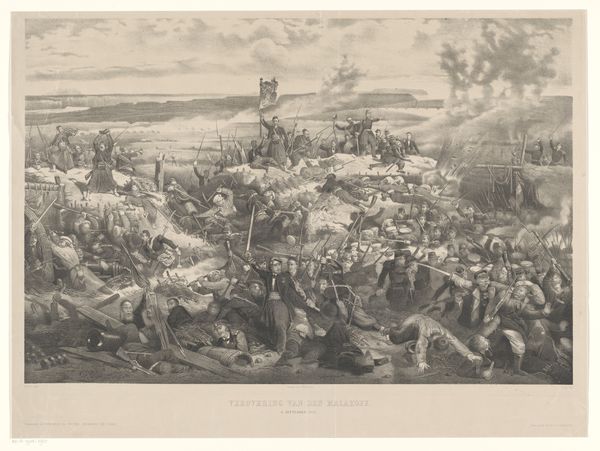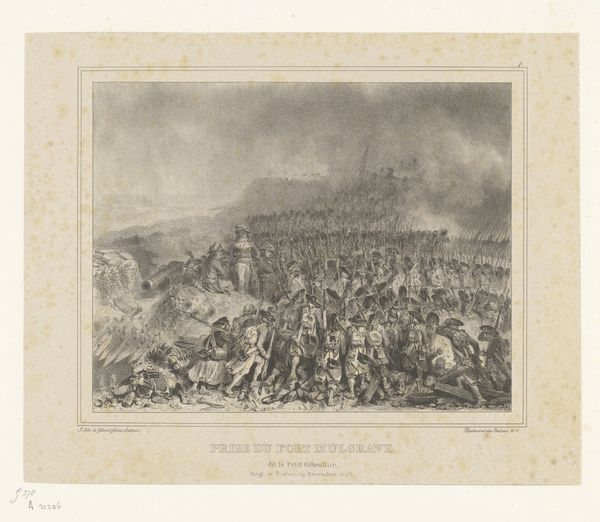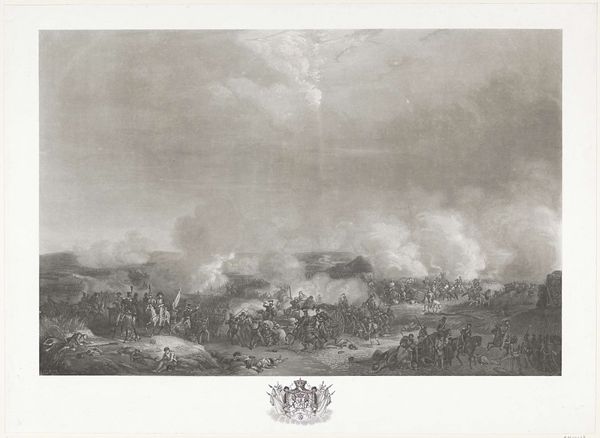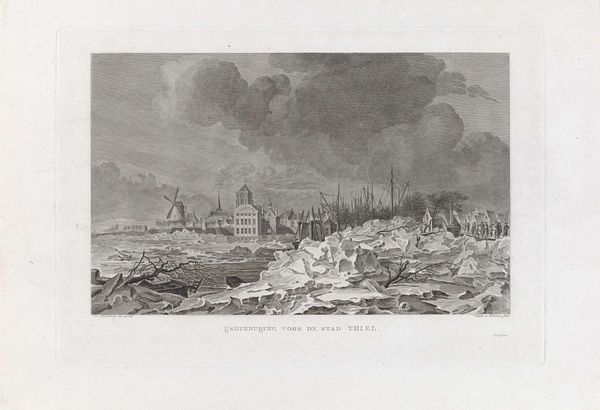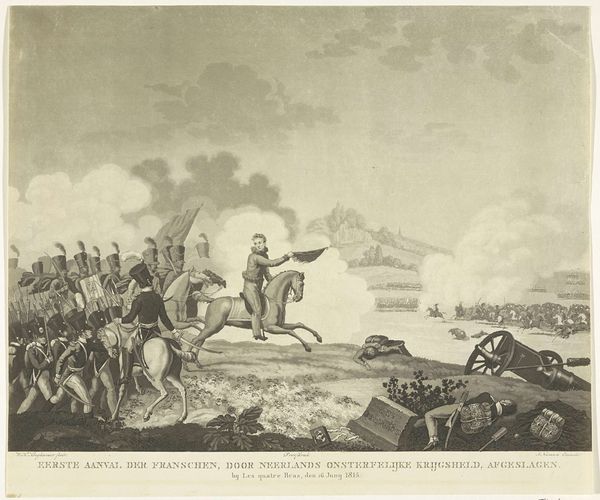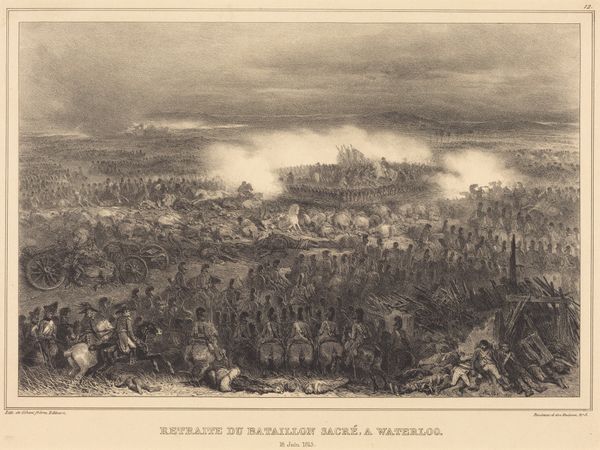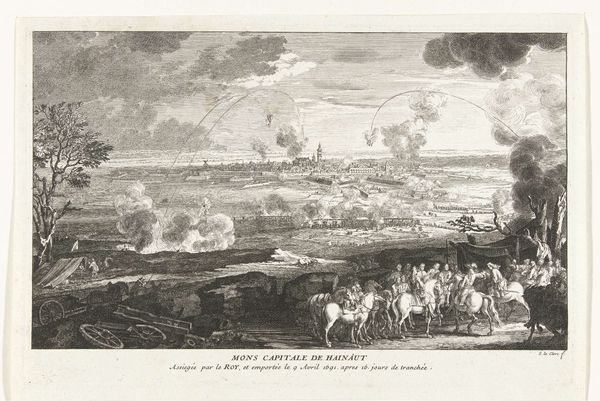
Dimensions: height 257 mm, width 380 mm
Copyright: Rijks Museum: Open Domain
Curator: This is a print by Vinzenz Katzler, entitled "Battle of Custoza, 1866," created between 1866 and 1867. It's an engraving depicting the famed battle. What strikes you first about this piece? Editor: It’s chaotic. The entire scene is filled with motion, bodies falling, soldiers clashing. Even the smoke from the cannons seems turbulent. The print evokes a sense of intense disarray and violence. Curator: Indeed. "Slag bij Custoza, 1866" reflects a pivotal moment within the Third Italian War of Independence, a war that aimed to complete the unification of Italy by incorporating Venetia, then still under Austrian rule. Consider the image's perspective from a Northern European, specifically Austrian, lens. What biases or commentaries do you discern about this war through the work’s representation? Editor: Well, beyond the general feeling of tumult and terror that pervades all war imagery, I’m drawn to the use of very specific iconographic symbols to promote national sentiments and memories. Observe how bodies in the foreground dramatically gesture – it recalls baroque history painting and even religious art of martyrdom. There's also something to be said for how this image would be reproduced through a newspaper, linking these men with Austrian heroism on a national level. Curator: Exactly! Notice the stark contrast between the chaotic battlefield and the distant, orderly cityscape in the background. This suggests not just the physical disruption of war, but perhaps also a clash between order and disorder, civilization and savagery, reflecting prevailing attitudes towards war and national identity during that era. How does this work speak to the power structures and conflicts embedded within nation-building endeavors of the 19th century? Editor: The very medium itself – engraving – speaks to a desire to disseminate particular messages broadly. As a medium reliant on the reproduction of imagery, its intention is, first and foremost, reaching a national audience and informing it about ongoing sociopolitical events. These heroic and mournful images imprint ideas of patriotism onto their viewers. The memory is continuously performed. Curator: Ultimately, this piece invites reflection on the role of art in shaping historical narratives and perpetuating cultural memory, and on how historical depictions of war reflect, and perhaps manipulate, the societal values of their time. Editor: I’m particularly interested in how symbols function and acquire weight within a given national context. We may be able to dissect some of the larger issues here when understanding these symbolic structures, however implicit they may seem.
Comments
No comments
Be the first to comment and join the conversation on the ultimate creative platform.



